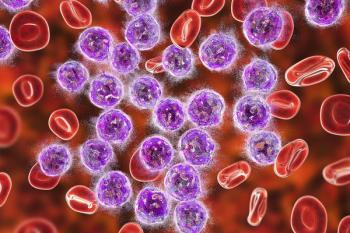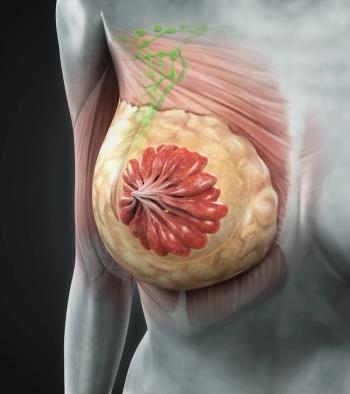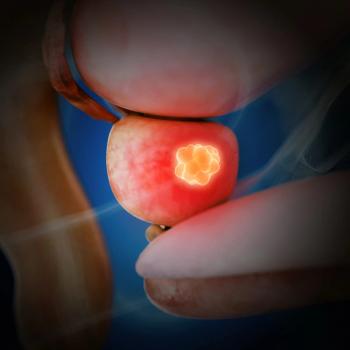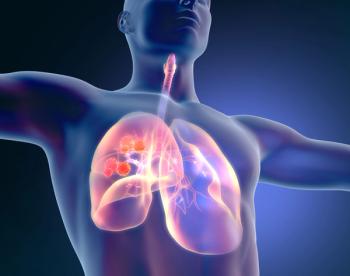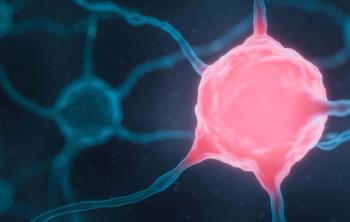
- ONCOLOGY Vol 14 No 8
- Volume 14
- Issue 8
Commentary on Abstracts #254 and #330
Before the introduction of the taxanes into the management of breast cancer, the anthracyclines (and doxorubicin and epirubicin [Ellence] in particular) were considered the most active agents against this malignancy. The marked activity of single-agent taxanes suggested that their antitumor efficacy might match and perhaps exceed that of the anthracyclines. Several prospective randomized trials have confirmed these initial impressions. At intermediate doses (60 mg/m²), the activity of doxorubicin and paclitaxel (Taxol) was similar; at higher doses (75 mg/m²), doxorubicin appeared more effective. Conversely, docetaxel (Taxotere) was reported to be more active than doxorubicin in one trial.
Before the introduction of the taxanes into the management of breast cancer, the anthracyclines (and doxorubicin and epirubicin [Ellence] in particular) were considered the most active agents against this malignancy. The marked activity of single-agent taxanes suggested that their antitumor efficacy might match and perhaps exceed that of the anthracyclines. Several prospective randomized trials have confirmed these initial impressions. At intermediate doses (60 mg/m²), the activity of doxorubicin and paclitaxel (Taxol) was similar; at higher doses (75 mg/m²), doxorubicin appeared more effective. Conversely, docetaxel (Taxotere) was reported to be more active than doxorubicin in one trial.
With these data in hand, it was logical to develop taxane/anthracycline combinations. The first few attempts utilized longer infusions of both taxanes and anthracyclines. Dose-limiting toxicity was mucositis, myelosuppression, and febrile neutropenia. Response rates were reported in the 50% to 65% range.
The second generation of taxane/anthracycline combinations used short infusions of taxane and anthracyclines given as a bolus. The initial reports by Gianni and collaborators (J Clin Oncol 13:2688-2699, 1995) and Dombernowsky and coworkers (Ann Oncol 7:687-693, 1996) were very encouraging, with response rates exceeding 80% and complete remission rates approaching 35% to 40%. Unfortunately, this degree of antitumor activity was not confirmed by subsequent trials utilizing the same doses and schedules of these drugs. Furthermore, cardiotoxicity emerged as a serious toxicity at cumulative doses of doxorubicin below the “usual” cardiotoxic threshold.
Subsequent clinical studies showed that cardiotoxicity could be decreased by limiting the cumulative doxorubicin dose to 360 mg/m² or less, or by incorporating a lag period of at least 4 hours between the administration of doxorubicin and paclitaxel. Other authors, including Conte et al (Semin Oncol 23:28-31, 1996; 23:39-42, 1996) substituted epirubicin for doxorubicin in this combination. The epirubicin/paclitaxel combination was reported to be safe and effective, and without problems related to cardiac toxicity. It was only natural to develop docetaxel/doxorubicin combinations.
The results of several phase II trials (including the one reported by Marcus and collaborators [abstract #254]) demonstrated the good tolerance, cardiac safety, and marked antitumor efficacy of the docetaxel/doxorubicin combination.
Nabholtz et al (abstract #330) present the preliminary data of an important comparative trial. In this study, the doxorubicin/docetaxel (ATaxotere) regimen produced a higher response rate and a longer time to progression than AC. Additional information about survival effects will determine whether the anthracycline/taxane combinations represent a new standard for the management of metastatic and locally advanced breast cancer. There are similar comparative trials ongoing in groups of patients with operable primary breast cancer.
Additional taxane/anthracycline combinations, substituting infusional doxorubicin, or a liposomal anthracycline, or adding a cardioprotector (such as dexrazoxane [Zinecard]) are currently under development. However, with the information at hand, both paclitaxel/doxorubicin (epirubicin) and docetaxel/doxorubicin are suitable alternatives to more standard anthracycline-containing regimens for the treatment of metastatic breast cancer. The role of these combinations in the adjuvant setting is currently under investigation.
Articles in this issue
over 25 years ago
Commentary on Abstract #280over 25 years ago
Commentary on Abstract #527over 25 years ago
Commentary on Abstracts #986 and #1015over 25 years ago
Commentary on Abstract #1916over 25 years ago
Commentary on Abstracts #341, #347, and #333over 25 years ago
Commentary on Abstracts #407 and #424over 25 years ago
Commentary on Abstracts #349 and #1259over 25 years ago
Commentary on Abstracts #317 and #322over 25 years ago
Commentary on Abstract #336over 25 years ago
Commentary on Abstracts #403 and #278Newsletter
Stay up to date on recent advances in the multidisciplinary approach to cancer.


